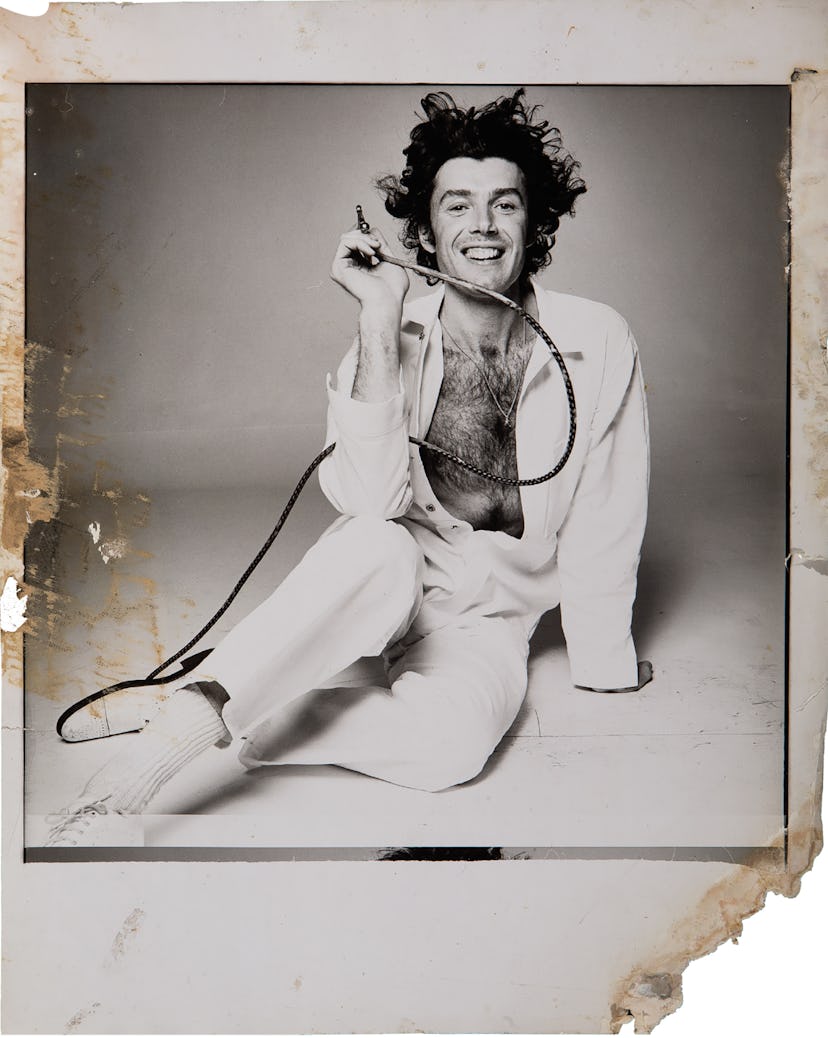The Fabulous Magazine Artist Who Lived Like the Cover Stars

When Interview magazine announced it was folding in May—temporarily, it turns out—social media responded with the kind of outpouring of grief and reverence normally reserved for the passing of an A-list star. The reaction would have made Andy Warhol proud. Founded by the artist in 1969, originally as a film journal, Interview went on to become the chronicle of cool, its chatty pages filled with only the most social, fabulous, and free-wheeling members of the fashion, film, and art worlds. And splashed with vibrant colors, the magazine’s celebrity covers of the 1970s and ’80s both reflected and broadcast the electricity of its contents. Many assumed Warhol created them; few knew they were actually the work of the late Richard Bernstein.
Bernstein’s original cover image of Diana Ross for Interview, September 1976.
Though largely unknown today, Bernstein, a handsome and stylish Bronx-born artist, was at the center of a fantastically connected crew. Grace Jones, whose first few album covers he designed before introducing her to her future husband and artistic collaborator, Jean-Paul Goude, was his best friend. The photographer and society girl Berry Berenson, whom he introduced as well to her future husband, Anthony Perkins, was once his fiancée. (No matter that Bernstein—and Perkins—were gay). He swung through London in the ’60s with Twiggy; took center stage nearly every night at Max’s Kansas City and Studio 54 in the ’70s; and spent more than 30 years living and working in the former ballroom of Manhattan’s famed Chelsea Hotel. His gallery shows, where he exhibited (though failed to really sell) his vivid Pop art, drew the likes of David Bowie, Roman Polanski, Margaux Hemingway, Yoko Ono, and Karl Lagerfeld.
“This guy had a life!” says Roger Padilha, whose new book, Richard Bernstein: Starmaker—Andy Warhol’s Cover Artist, written with his brother, Mauricio Padilha, contains all the titillating details, including the orgies that Bernstein participated in at the behest of Salvador and Gala Dalí.
Andy Warhol, Keith Haring, Bernstein, Grace Jones, Michael Vollbracht, and Antonio Lopez, at Studio 54, circa 1981.
Perhaps wary of the potential competition, Warhol enlisted Bernstein in 1972 to design Interview’s covers. Though commercial work at the time generally sounded the death knell of a fine-arts career, Bernstein, whose lifestyle belied his dire finances—“he’d take a limo to the deli,” notes Mauricio—readily accepted the job. He infused the magazine’s covers with go-go glamour and created a hyperkinetic, handwritten logo that, as Mauricio points out, “looked as though he was high on coke when he did it.” (Given his copious drug use, he probably was.) As the years went on and Bernstein was allowed more autonomy, the covers became even more exhilarating. Coated in layers of neon paint and makeup, and silhouetted in white (a technique later lifted by the artist Richard Phillips for his “Most Wanted” portrait series), the stars seemed to jump off the page. As Grace Jones put it, “Richard’s art made you look unbelievable…You didn’t have to go in already made up for him. He did the makeup on you. And it was magic.”
Bernstein’s first cover, for the May 1972 issue, featured a photograph by Chris von Wangenheim of the actress-model Donna Jordan.
Alas, harsh reality set in when Warhol died, in 1987, following a gallbladder operation. Soon thereafter, Shelley Wanger was brought in to the publication to lead the charge, replacing Gael Love; and, as new editors are wont to do, she shook up the look of the magazine, leaving Bernstein out of a job. He continued to work on his art through the ’90s, but drugs and a lack of income took their toll. In 2002, he was found dead, at the age of 62, in his Chelsea Hotel loft. Some reports claim he died of complications from HIV; others, of a heart condition. Likely, it was suicide. “The end of his story is definitely a bummer,” Roger says. “But the life he led was extraordinary. He participated in everything in the late 20th century. All the incredible work of that era—if Richard didn’t do it, he had a hand in it.”
His illustration of Madonna for the December 1985 cover.